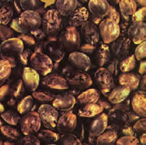
Latin Names:
Major Varieties: Cannabis sativa L.,
Cannabis indica
Common Names:
Hempseed, hempnut
Superfood Type:
Seed

Hemp belongs to the same family of plants as mulberry (otherwise known as Moraceae). The mulberry family is known for its genetic and chromosomal complexity, which is likely what allows this family of plants to survive in nearly every climate on Earth.
Hemp is a tough plant believed to originate in Central Asia. It can be grown in practically any ecosystem in the world. Although usually three to six feet in height at full growth, hemp can reach a height of over fifteen feet! Hemp does not require any of the pesticides or herbicides that are used to keep weak plants alive. Only eight out of nearly a hundred known common crop pests may cause problems, and these can be dealt with by natural means. Hemp also naturally suppresses weeds due to its fast growth and the development of a canopy. And on top of all of this, the hemp plant produces a superfood as a seed.
Without [hemp rope] how could water be drawn from the well? What would scribes, copyists, secretaries, and writers do without it [hemp paper]? Would not official documents and rent-rolls disappear? Would not the noble art of printing perish?
—François Rabelais (1495–1553), French humanist and satirist during the Renaissance; quoted in At the Edge of History by William Irwin Thompson
Hemp production is probably the oldest industry on the planet, going back more than ten thousand years. The Columbia History of the World states that the oldest relic of human industry is a piece of hemp fabric dating back to approximately 8000 BC. The oldest Chinese agricultural treatise, the Xia Xiao Zheng, written in the sixteenth century BC, discusses hemp as one of the primary crops grown in ancient China. Since the beginning of human history, the cultivation and use of hemp has also occurred in the native cultures of North America and Europe and in the great civilizations of India, Sumeria, Mesopotamia, Persia, Egypt, and Central America.
Hemp falls into the Cannabis genus. The Persians called hemp kanab, and the Greeks kanabis (from which we derive not only the English word “cannabis” but also the word “canvas”). The Germans call it hanf or hampf; the Dutch hennep; the Danish hamp; the Swedes hampa; and the Chinese huo ma ren.
Hemp has played a vital role in agriculture and culture—especially in America. The “hamp” place name (New Hampshire, Hampstead, Hampton, etc.) references locations where hemp was once grown.
George Washington and Thomas Jefferson both grew hemp on their farms and Ben Franklin owned a hemp paper mill. Hemp continued as a massive agricultural crop in North America until the late 1930s. Hempseed is literally as American as apple pie.
In 1937 Popular Science magazine called hemp “The New Billion-Dollar Crop.” A machine that simplified the hemp papermaking process had just been invented. But the promise of hemp was never fulfilled.
In the early 1930s one of the great media conspiracies of the twentieth century unfolded. Newspaper publisher William Randolph Hearst, along with DuPont Corporation, a group of petroleum interests, the American cotton-growing lobby, international bankers, and a group of ignorant politicians, led a crusade to ban hemp.
The Hearst family had acquired millions of acres of forestland that it intended to turn into paper for publishing and Pierre DuPont held patent rights to the sulfuric-acid, wood-pulp paper process. Also, in 1937 DuPont patented nylon rope (to replace hemp rope) made from synthetic petrochemicals. The petroleum industry did not want any competition from hemp rope, nor did they want to compete against inexpensive hempseed biodiesel fuel, so Hearst used his power as a publisher to sway public opinion about hemp and marijuana.
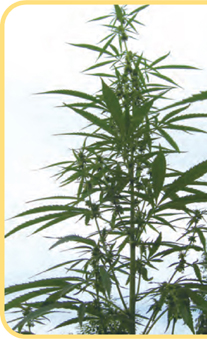
With the help of U.S. Treasury Secretary Andrew Mellon the United States Congress passed the Marijuana Tax Act in 1937, which placed a prohibitive, elaborate set of rules around the growing, handling, and distributing of hemp. This was possible because marijuana is a subspecies of hemp known for its elevated psychoactive and medicinal THC content. A violation of any of the 1937 Tax Act rules would result in a penalty of up to $2,000 (in 1937 currency) or up to five years in prison. This legislation essentially ground the hemp production industry to a halt in America.
Hemp was briefly legalized again during World War II. The United States government produced the film Hemp for Victory to encourage farmers to grow the crop. Nearly a million acres of hemp were grown in the Midwest to support the war effort. But hemp farming was shut down after the war. Then, due to pressure brought by the same special interests as before, came the Comprehensive Drug Abuse Prevention and Control Act of 1970 that outlawed marijuana altogether and made little distinction between hemp and marijuana.
Hemp and marijuana are both classified as Cannabis sativa, a species with hundreds of subspecies varieties.
That the hemp plant, Cannabis sativa, may be used as a superfood initially surprises some people. The government and media have largely restricted knowledge of hemp to its unique variants of marijuana. Marijuana, with its leaf and flower content of the psychoactive substance delta-9-tetrahydrocannabinol (THC), has become illegal in most of the Western world and labeled a “drug,” while other very serious and extremely dangerous drugs such as hard liquor and pharmaceuticals (with known dangerous side effects) are legal. Industrial hemp is bred to maximize fiber, seed, and/or oil, while marijuana varieties seek to maximize THC. Hemp has a typical THC level of between 0.05 and 1 percent in its flowers. Marijuana has a THC level that ranges from 3 to 20 percent in its flowers. Because of the low THC content of hemp flowers, it would take over a dozen joints smoked in a dozen minutes to feel even a slight effect.
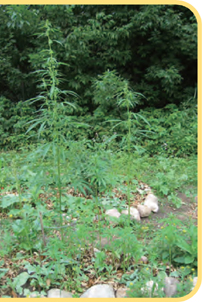
We are often told that hemp looks so similar to marijuana that hemp growers could hide marijuana plants in their fields. The truth is that hemp’s low levels of THC immediately ruin marijuana’s THC levels and female bud production. If hemp does pollinate any nearby marijuana, the result will always be lower THC marijuana. Marijuana cultivated outdoors must be grown far away from hemp to avoid producing poor quality, seedy flowers (buds) and to prevent cross-pollination.
All parts of the hemp plant are useful. Hemp can be used to make virtually anything that is currently made of cotton, timber, or petroleum. Hemp can be used to produce nearly every major category of commercial product. And hemp produces a superfood seed. Consider the various aspects of the hemp plant that can be used in the following ways:
The hempseed is a complete protein source. The oil from hempseed has the highest percentage of essential fatty acids of nearly any seed on Earth. Hempseed typically contains over twenty trace minerals. It naturally sprouts on the hemp plant late in the growing season (during the autumn), lowering phytic acid and increasing enzymes, which make the seed even more digestible. Hempseed’s essential fatty acid and protein profile provides a healthy alternative to fish, which is becoming increasingly risky to eat, given rising mercury and PCB contamination.
Hemp leaves are also edible. They contain a high percentage of silica, which is useful in building strong bones and beautiful skin, hair, and nails. Hemp leaf is rich in fiber. One side of the hemp leaf is soft and the other side is abrasive, so as the leaf is eaten and the fiber moves through the body, the sides of the leaf churn through the digestive tract, scrubbing and softly cleaning the intestines.
Dried hemp leaf tea has phenomenal taste as well as antimicrobial action. In my experiments with making tea and leaving different teas exposed to the atmosphere in my home for over a week, I’ve found that hemp leaf tea keeps microbes from growing in it even better than the most powerful herbs available, including powerful antimicrobial Amazonian herbs such as pau d’arco and cat’s claw.
Thanks to its nourishing oil, hemp is booming in the personal hygiene industry with hemp found in soaps, shampoos, lotions, lip balms, bath oils, personal lubricants, and more. Companies such as Dr. Bronner’s have fought long and hard against hemp persecution in order to keep hemp body-care products on store shelves for all of us.
The hemp plant is made up of the planet’s strongest natural fibers. Hemp was the first crop ever cultivated for textile production. One acre of hemp will produce more textiles than two acres of cotton. In addition, hemp is four times warmer than cotton, four times more water-absorbent, and has three times the tensile strength of cotton.
Hemp is also a far safer crop to grow than cotton. Cotton is typically sprayed with chemical pesticides seven times each growing season, causing all sorts of environmentally disastrous problems including the contamination of groundwater and ill health in humans, nearby plants, animals, and insects. In the United States, cotton occupies 1 percent of the farmland but uses 50 percent of all pesticides. As much as 38 percent of the pesticides found in cotton clothing can be absorbed when one perspires in it.
Hemp textiles are stronger, more durable, more insulated, more mildew- and mold-resistant, and easier to produce than textiles made out of cotton. Hemp clothing breathes well, moving moisture away from the body better than cotton. Clothing that consists of at least one-half hemp fibers provides protection from overexposure to the sun’s UV rays.
China was the world’s first paper maker. The ancient Chinese used hemp to make paper nearly two thousand years ago. Until 1883, more than 75 percent of the world’s paper was made with hemp fiber.
Hemp can yield three to eight dry tons of fiber per acre, four times more than what an average forest yields. Hemp can replace wood fiber, saving our forests from destruction. Most trees take nearly twenty years to mature—hemp takes four months. Paper made from hemp lasts for centuries, compared to twenty-five to eighty years for paper made from wood pulp. Hemp planting not only reduces deforestation, it improves the soil upon which it is grown. By producing hemp, we can save the forests that provide our fresh water, wildlife habitats, recreation opportunities, oxygen, carbon traps (reducing atmospheric damage), and natural beauty.
Hemp’s low lignin content reduces the need for acids used in pulping, and its creamy color lends itself to environmentally friendly bleaching with hydrogen peroxide instead of harsh, environmentally dangerous chlorine-bleaching chemicals.
Hemp fiber paper resists decomposition better than any natural material. Hemp paper can be recycled ten times, while wood-based paper can only be recycled twice. Hemp paper more than fifteen hundred years old has been found.
Hemp rope has been used to make cloth and rope for over ten thousand years. Hemp ropes are known for their strength and durability. The production and use of hemp rope is one of the basic technologies that made sailing possible. Imagine sailing without any rope or string! Hemp rope is produced from hemp fibers.
Eco-friendly hemp can replace nearly all the toxic petrochemical products. Hempseed can be used to manufacture biodegradable plastic products, cellophane, recycled plastic mixed with hemp for injection-molded products, resins, oil paints, varnishes, inks, solvents, lubricants, putty, and coatings, to name a few examples. Over two million cars currently in use in this country have hemp composite parts for doors, dashboards, roof racks, and other parts produced from hemp grown outside of the United States.
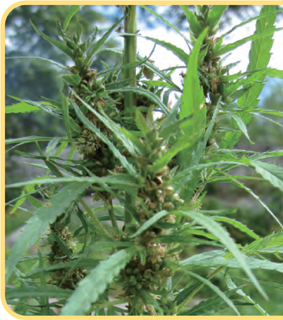
The core of the hemp stalk is used to produce fiberboard, insulation, carpet, fiberglass substitutes, cement blocks, concrete, stucco, and mortar. The hemp building materials MDF (medium density fiber) composite boards, tested by Washington State University Wood Materials and Engineering Laboratory, proved to be two and a half times stronger than wood MDF composites. Hemp composite boards were also three times more elastic than wood composite boards. Elasticity is the factor that determines whether or not a nail can be driven into the board. Another advantage is that water does not penetrate MDF hemp boards.
The original diesel engine was designed to run on plant oils such as hempseed oil. Any diesel engine can still run on hemp oil or refined biodiesel made from hemp oil.
Hemp is the perfect source for ethanol gasoline fuel as well. It produces more biomass than any other plant—ten tons per acre in approximately four months. According to the U.S. Department of Energy, hemp as a biomass fuel producer requires the least specialized growing and processing procedures of all hemp products. The development of biofuels can actually eliminate our consumption of fossil fuels and nuclear power.
When hemp is burned as fuel, any carbon dioxide released from the burning hemp matches the carbon dioxide the plant had beneficially taken from the environment during its lifetime, creating a closed carbon cycle that slows down the effects of atmospheric pollution.
In 1941 Henry Ford produced an experimental automobile with a hemp-resin body composed of 70 percent cellulose fibers from hemp. The auto was lighter than typical metal vehicle framing, giving it greater fuel efficiency. The car body could absorb blows ten times as great as steel without denting. The car was designed to run on hemp-ethanol fuel. Because of the petroleum-backed smear campaigns and the ban on both hemp and alcohol, the car was never mass-produced.
Because of its multiplicity of uses, the hemp plant is legendary among ecologically oriented individuals and entrepreneurs involved in environmentally friendly businesses. The Union of Concerned Scientists has stated that 80 percent of our ongoing ecological problems are caused by four human activities:
Meat and poultry production;
Nonorganic agriculture; and
Home construction and maintenance.
By incorporating hemp into the design and manufacturing process, the ecological harm in each of these categories is reduced or eliminated. All products made solely from hemp fibers are biodegradable, compostable, and recyclable.
Leading researchers and medical doctors consider hemp to be one of the most nutritious food sources on the planet. The hardiness and nutritional power of hempseed could significantly address the planet’s protein needs and starvation problems.
As exposure levels to artificial chemicals, pesticides, and radioactive materials increase, more and more people are becoming interested in eating low on the food chain (as opposed to eating animal products such as meat, large ocean fish, crustaceans, and dairy that are high on the food chain where toxins accumulate)—this means eating more and more plants.
The side effects of eating animal products, such as excessive cholesterol, saturated fat, and weight gain, along with increasingly poor quality and taste as well as artificial chemical use (pesticides, injected hormones, animal vaccinations, etc.) are becoming an overwhelming problem, causing millions of people to seek more humane, sustainable alternatives with vegetarian, vegan, and raw-food sources of protein and fat. One of the best sources of plant protein and fat is found in hempseed.
In terms of its average nutrient content, shelled hempseed is 35 percent protein, 47 percent fat, and 12 percent carbohydrate.
Hempseeds contain all the essential amino acids and essential fatty acids necessary to maintain healthy human life. No other single plant source has the essential amino acids in such an easily digestible form, or has the essential fatty acids in as perfect a ratio to meet human nutritional needs.
Packed with 33 to 37 percent pure digestible protein, raw hemp seed, with all their original life-force energy and enzymes intact, are one of nature’s richest sources of complete protein. Only algae such as spirulina, AFA blue-green algae, and marine phytoplankton exceed hemp in protein.
Approximately 47 percent of each hempseed is comprised of “good fats,” with an ideal balance of omega-3 (alpha-linolenic acid) and omega-6 essential fatty acids (linoleic acid and gamma-linolenic acid).
The carbohydrate content of shelled hempseed is 11.5 percent and its sugar content is 2 percent. Of the shelled hempseed carbohydrate, 6 percent is in the form of fiber. The fiber content of hempseed flour is the highest of all commercially grown seeds. In addition to containing the basic human nutrient groups, hempseed have a high content of vitamin E (three times higher than flax) in the form of alpha-, beta-, gamma-, and delta-tocopherol and alpha-tocotrienols.
Hempseed are also an outstanding source of monounsaturated omega-9 fatty acids, which are considered a healthy energy source and a quality beautifying oil.
Hempseed is a good source of brain building, liver-supporting lecithin. Lecithin is a lipid substance (fat-oil) composed primarily of choline and inositol. It is found in all living cells as a major component of cell membranes. The term “lecithin” is derived from the Greek word lekithos meaning “egg,” as lecithin was first discovered in eggs.
Hempseed is one of the few seeds that contains chlorophyll. Present inside each hempseed are infant green leaves that will eventually open and grow as the seed sprouts.
The THC found in various concentrations in the hemp genus is medicinally useful to individuals with chronic pain and nausea such as cancer patients.
Amino acids are chemical units of “building blocks” that make up protein. Next to water, protein makes up the greatest portion of the body’s weight. Protein builds muscles, ligaments, tendons, organs, glands, nails, hair, body fluids, and nearly all aspects of microscopic cellular machinery. Protein is essential to the growth of bones.
Proteins themselves can act as neurotransmitters or precursors to neurotransmitters enabling all of our cells to receive and transmit messages.
Protein is useful not just for building muscle and strength, but also for endurance, balanced blood sugar and brain chemistry, neurological health, rapid healing, building strong bones, detoxification, and nearly every other aspect of healthy living.
The challenge we face is that “high-protein” animal foods are becoming more and more difficult to obtain. High-protein “wild game” is increasingly rare, and factory farmed beef, chicken, and fish are lower in protein and higher in fat and toxins. Factory animal farming is environmentally, emotionally, and psychologically dysfunctional, the impact of which is making us all aware that we must move away from toxic sources of protein.
Hempseed, unlike commonly available animal protein, is a pure, raw source of complete protein. It never needs to be cooked to kill bacteria, so all of its vital components remain intact.
Hempseed protein can also be more readily absorbed than animal protein because it blends easily into water, beverages, smoothies, shakes, and salad dressings without coagulation or heat. Hempseed is easy on the digestive system.
Of the protein fraction of the total hempseed, 65+ percent consists of globular edestin—the highest concentration found in the plant kingdom. The word “edestin” comes from the Greek word edestos, which means edible. Edestin is considered by many scientists and researchers to be the most edible and easily digestible form of protein in the food chain.
The other 35 percent of the protein in hemp is albumin, which is also considered one of the more easily digested forms of protein.
Edestin and albumin are “soft” broad-spectrum proteins that are hypoallergenic (low in allergy-forming reactions within the population). Many people are allergic to common high-protein foods such as whey and soy.
Edestin is a plant globulin. Globulins are simple globular proteins constructed entirely from amino acids. Nearly all antibodies, enzymes, hormones, hemoglobin molecules, and fibrogin (which converts to the blood-clotting agent fibrin) are globular proteins and can be constructed out of edestin.
Globulins are divided into three classes: alpha, beta, and gamma globulins. Alpha and beta globulins are super-transporters that carry protein and information from one part of the body to another via the blood. They cart the raw materials required to build new tissues as well as replace injured tissues.
Gamma globulins work on the immune system and are divided into five classes of antibodies called immunoglobulins. All are formed to combat specific cell-invading microbes. These globulins are responsible for both the natural and acquired immunity a person has against foreign microbes. They are essential to a healthy immune system.
Gamma globulins comprise the first line of defense against infection. They are antibodies programmed by white blood cells and replicated by white blood cell clones known as plasma cells. These gamma globulin antibodies destroy antigens (microbes) such as nanobacteria, viruses, bacteria, toxic fungi, cancer cells, toxins, dead tissue, and internal waste debris. Antibodies are custom designed to neutralize or disintegrate only one specific type of antigen. These antibodies circulate in the lymph fluid and the blood (sometimes for years) awaiting near contact with the antigen they are made to destroy. Once they come within the vicinity of the antigen, the antibody initiates the release of a cascade of corrosive enzymes that pulverize the antigen surface.
One white blood cell can give birth to hundreds of clone plasma cells in just a few days. A mature plasma cell produces about two thousand antibodies every second during its few days of life. The body’s ability to resist and recover from illness depends upon how rapidly it can produce massive amounts of antibodies to fend off an initial attack. This is how we develop and acquire immunity.
If the globulin protein-starting material is in short supply, nutrient transport is impaired and the army of antibodies may be too small to prevent the symptoms of sickness from setting in.
Because hempseed is the world’s best source of globulin-building materials (edestin), eating hempseed will ensure the body has the reservoir of globulin resources necessary to transport raw materials and support the immune system and immune response.
Essential fatty acids (EFAs) are considered “essential” because our body does not manufacture them independently, nor can they be created from other fats or oils in our diet. The presence of essential fatty acids in our diet is now considered a critical aspect of maintaining great health for a lifetime.
Essential fatty acids are powerful antioxidants that protect our skin from excessive sun exposure. They also play an important role in improving our immune system due to their potential anti-inflammatory properties. They help us burn excess fat by delivering readily available energy that helps carry and remove toxins from the skin, intestinal tract, kidneys, and lungs. EFAs nourish and feed the brain and eyes, which are made up of a large fraction of omega-3 fatty acids. EFAs also lubricate our cardiovascular system, reducing the threat of heart disease and stroke.
Hemp is one of very few plants that contains significant amounts of the following essential fatty acids: omega-6 (linoleic acid and GLA) as well as omega-3 (ALA). The oil fraction of the overall hempseed normally contains about 80 percent of these essential polyunsaturated fatty acids, with omega-6 and 3 in the ideal ratios of approximately 3:1 or 4:1. The perfect ratio of omega-6 to omega-3 is 3.38:1, closely approximating the 3:1 ratio recommended for the human diet by America’s leading dietary fat and oil expert Udo Erasmus and the 4:1 average ratio recommended by the World Health Organization (WHO), Sweden, and Japan. Hempseed are the only food known that contain these ideal ratios. Fish oil and flaxseed oil are rich in omega-3, but not omega-6. Almost all the commonly consumed nuts and seeds are rich in omega-6, but not omega-3.
The omega-3 content of hempseed increases when the plant is grown in the extreme northern or southern hemispheres. The cooler the climate, the higher the need for polyunsaturated fatty acids, especially omega-3s, which are well-represented not only in hempseed but also in cold-water fish, marine phytoplankton, krill, flaxseeds, walnuts, noni seeds, sacha inchi, blue-green algae, and many other interesting sources. Omega-3 fatty acids also protect us from overexposure to the sun, which is particularly strong in the extreme northern and southern hemispheres in the summer.
Scientific research has found that coconut oil appears to increase the effectiveness of the omega-3 fatty acids in hempseed, so consuming hempseed with raw organic coconut oil is recommended.
Hempseed, like spirulina, contains the super anti-inflammatory, essential fatty acid known as gamma-linolenic acid (GLA).
GLA has been shown to inhibit the formation of inflammatory prostaglandins (short-lived hormones) and fatty arachidonate metabolites of digestion.
GLA is also known to help balance hormones. This means that hempseed may positively improve premenstrual syndrome (PMS) symptoms as well as mood swings. A deficiency of GLA has been shown to cause women to become oversensitive to their own prolactin hormone, causing breast pain.
Hemp excels at absorbing minerals from the soil. Hempseed is an excellent source of major and trace minerals. Hempseed have been found to contain the following minerals*:
Phosphorous (an energy “battery” mineral, needed to improve bone density)
Potassium (an energy “action” mineral)
Magnesium (opens over 300 different detoxification pathways in the body)
Sulfur (primary beauty and longevity mineral)
Calcium (relaxes the digestive tract and muscular system, removes toxins)
Iron (a blood builder and oxygenator)
Manganese (a blood builder and oxygenator)
Zinc (a beauty mineral, supports the skin and liver)
Sodium (balances potassium, feeds the adrenals)
Silicon (a beauty mineral, needed to improve bone density)
Copper (part of the vitamin C complex, reverses gray hair)
Platinum (an enzymatic master mineral)
Boron (assists with calcium assimilation, normalizes hormones during menopause)
Nickel (plays a key role in enzyme metabolism)
Germanium (an antiviral, immune-supporting mineral)
Tin (helps reverse male pattern baldness)
Iodine (a thyroid mineral, reverses hypothyroidism)
Chromium (a pancreatic mineral)
Silver (an antiviral, antifungal, antimicrobial mineral)
Lithium (an alkaline, mood-improving mineral)
Hempseed protein delivers a balanced array of eighteen amino acids. An important aspect of hempseed protein is a high content of arginine (123 milligrams per gram of protein) and histidine (27 mg/g protein), both of which are important for growth during childhood, and of the sulfur-containing amino acids methionine (23 mg/g protein) and cysteine (16 mg/g protein), which are needed for proper enzyme formation.
Sulfur-bearing amino acids such as cysteine and methionine help the liver and nervous system detoxify poisons. They also improve the immune system, physical strength, flexibility, agility, complexion, hair luster, speed of healing, and the functionality of the liver and pancreas.
Of all the kinds of hemp worldwide, only 2 to 3 percent is considered to be high enough in THC to be labeled “marijuana.” Most of the THC and other psychoactive cannabinoids are found in the leaves and flowers.
In some cases hempseed do contain trace amounts of THC. Studies indicate that a dose as high as 5 milligrams of THC causes no psychoactive effects in an individual weighing 150 pounds. To ingest five milligrams of THC from hempseed containing two parts per million of THC, you would have to eat five pounds of hempseed in a day—an almost impossible feat that would still not cause a marijuana “high.”
The United States government irrationally outlaws any hempseed products containing even trace amounts of THC. All hempseed delivered into the United States contains THC in amounts less than one part per million.
Generally, the strains of hemp plant selected for food use are those that produce little or no THC. These nutritional varieties of the hemp plant grow in temperate climates to heights of sixteen feet and, as with most agricultural grains, their seeds can be harvested in a conventional manner with a combine. Since modern handling and shelling of the seed minimize its contact with leaf resins, the shelled seed itself and the oil, nut butter, and other foods prepared from the seed are made with THC concentrations ranging from as low as one part per million to undetectable. These hemp products, when consumed in normally recommended amounts, should eliminate positive urine tests for THC. Studies conducted on older versions of hempseed oil found some to contain THC concentrations that resulted in positive urine tests.
To be imported into the United States of America, hempseed must be cracked out of their shells (hemp agriculture is illegal in most of the U.S. although the laws are shifting quickly as the general realized value of this plant continues to grow).
Imported hempseed and hemp protein products from Canada are currently available in the U.S. via the Internet, by mail order, and in some health food stores. Hemp food and body-care products currently available in the world market include:
Hempseed (shell removed)
Hempseed (whole)—Currently legal in many countries including the United Kingdom, but not legal in the United States as of this writing
Hempseed protein
Hempseed cold-pressed oil
Raw hempseed chocolate bars, protein, and energy bars
Raw hempseed ice cream
Hempseed salad dressings
Hempseed breads
Hempseed beer
Hempseed oil topical body-care products (soap, shampoo, etc.)
Of these hemp products, raw hemp protein powder is of particular importance for those requiring a high-protein diet. Made from raw hempseed (cold-pressed at less than 110 degrees), the remaining defatted hemp cake is then finely milled to contain protein powder, with much of the oil removed. Hemp protein is a balanced, “whole” protein, full of amino acids, vitamins, minerals, and antioxidants. Hemp’s superior 66 percent edestin and 33 percent albumin protein structure is the highest in the plant kingdom.
Hempseed are great eaten alone as a snack. They go well sprinkled on salads. They blend well and add richness and flavor to smoothies and salad dressings.
Whole, unhulled hempseed may be soaked in water, if desired, to lower enzyme inhibitors typically found in seeds. They can then be deshelled and eaten or crushed into a milk, strained, and drunk fresh. I enjoy them both ways.
Hempseed can be easily added into superfood smoothies, fresh juices, raw chocolate (cacao) concoctions, and homemade salad dressings. Hempseed are richer in protein and more filling than most salad seeds such as sunflower and poppy seeds.
Teen dose (ages 10–18): 30–50 grams a day
Adult dose: 50–75 grams a day
Super-Athlete dose: as much as 140 grams a day
1 cup hempseed
4 cups filtered water
1 pinch Celtic sea salt
¼–½ vanilla bean
Blend all ingredients in blender and filter through a strainer, nut-milk bag, or other fine-mesh bag.
Add 1–3 tablespoons of a sweetener if you wish (raw honey, yacon root syrup, or agave nectar). Optional: add berries, peaches, and/or papaya.
If your hempseed are in the shell, soak them in water for 8 to 12 hours first, drain the water, wash the hempseed with more water, then blend and strain as directed above to remove the shells.
Add hemp milk to your smoothie or shake, your morning cereal, or to your coffee or tea. You can also drink hemp milk straight.
½ cup hempseed
4 cups pure spring water
2 tbsp. milk thistle seeds, fine ground (a coffee grinder works well)
1 tbsp. spirulina
2 tbsp. agave nectar
1 raw vanilla bean (whole)
1 pinch Himalayan salt
This is another version of hemp milk with liver-supporting milk thistle seeds and spirulina. Blend until smooth, and strain through a strainer, nut-milk bag, or fine-mesh bag. Enjoy!
Add ½ cup spirulina and 1 teaspoon of Celtic sea salt to a 10-ounce bag of hempseed. Shake this mixture up and use as a salad topping; mix with olive oil or hemp oil and fresh lemon or apple cider vinegar for a delicious salad dressing; or eat it straight out of the bag with a spoon for a high-protein snack.
⅓ cup hempseed
¼ hempseed oil
¼ cup olive oil
3 tbsp. lemon juice
2 sprigs of parsley
2 tbsp. hempseed butter
2 tbsp. spirulina
2 tbsp. honey
Blend until smooth. I made this dressing on The Mad Mad House, a reality TV show I was on in 2005. It was a hit!
½ cup water
3 tbsp. lemon juice
2 tbsp. barley miso
⅓ cup hempseed
1 tsp. chopped ginger
2 tbsp. tahini
2 tbsp. olive oil
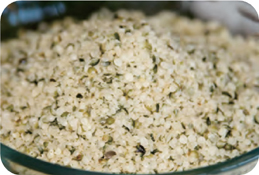
Blend until smooth. This recipe is the most nutritious gravy ever.
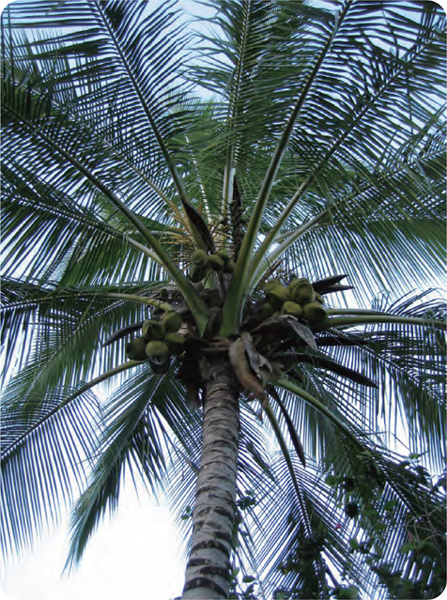
*This mineral list is derived from Drugs Masquerading as Foods by Suzar. The parenthetical comments have been added by David Wolfe.